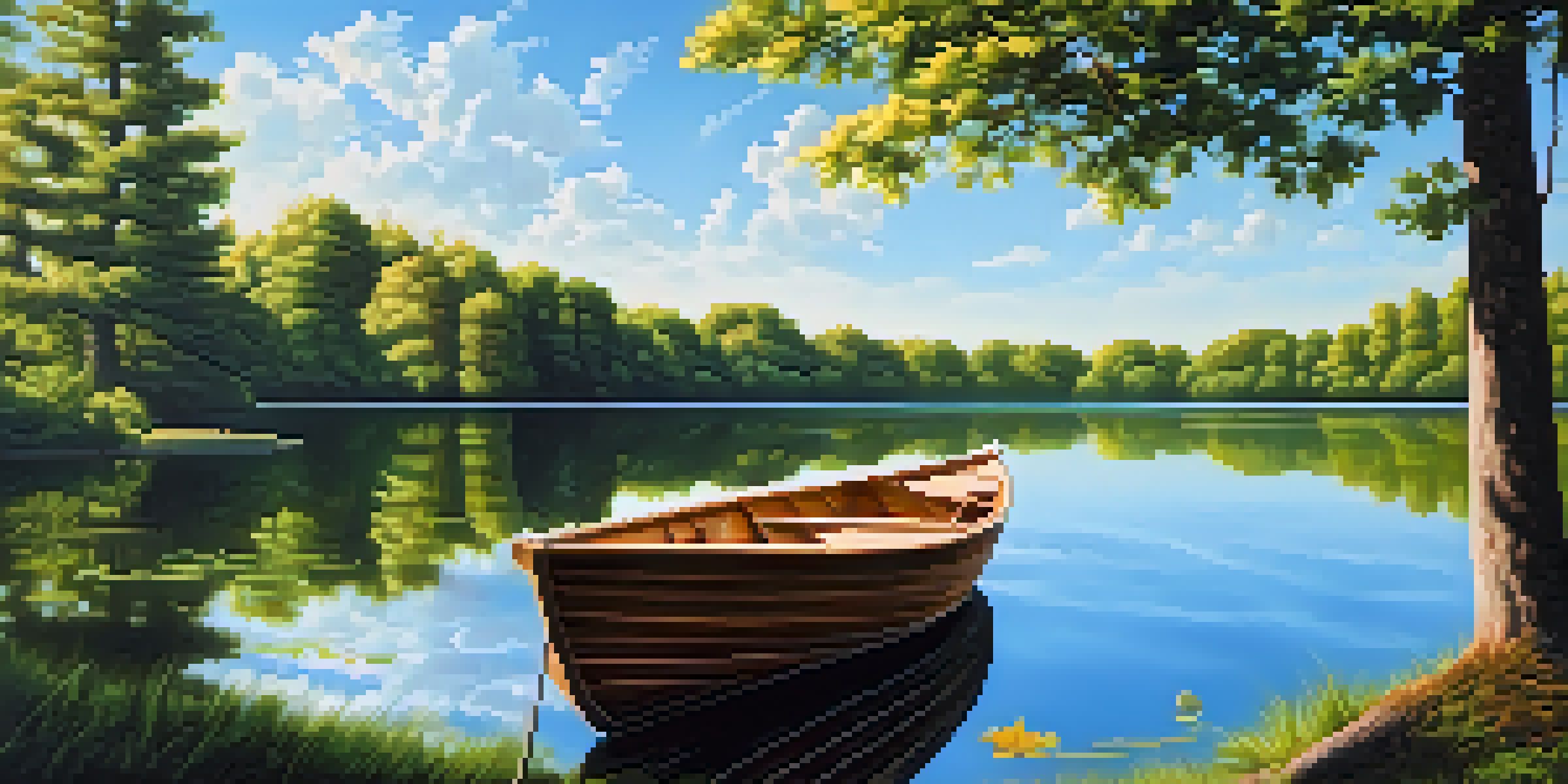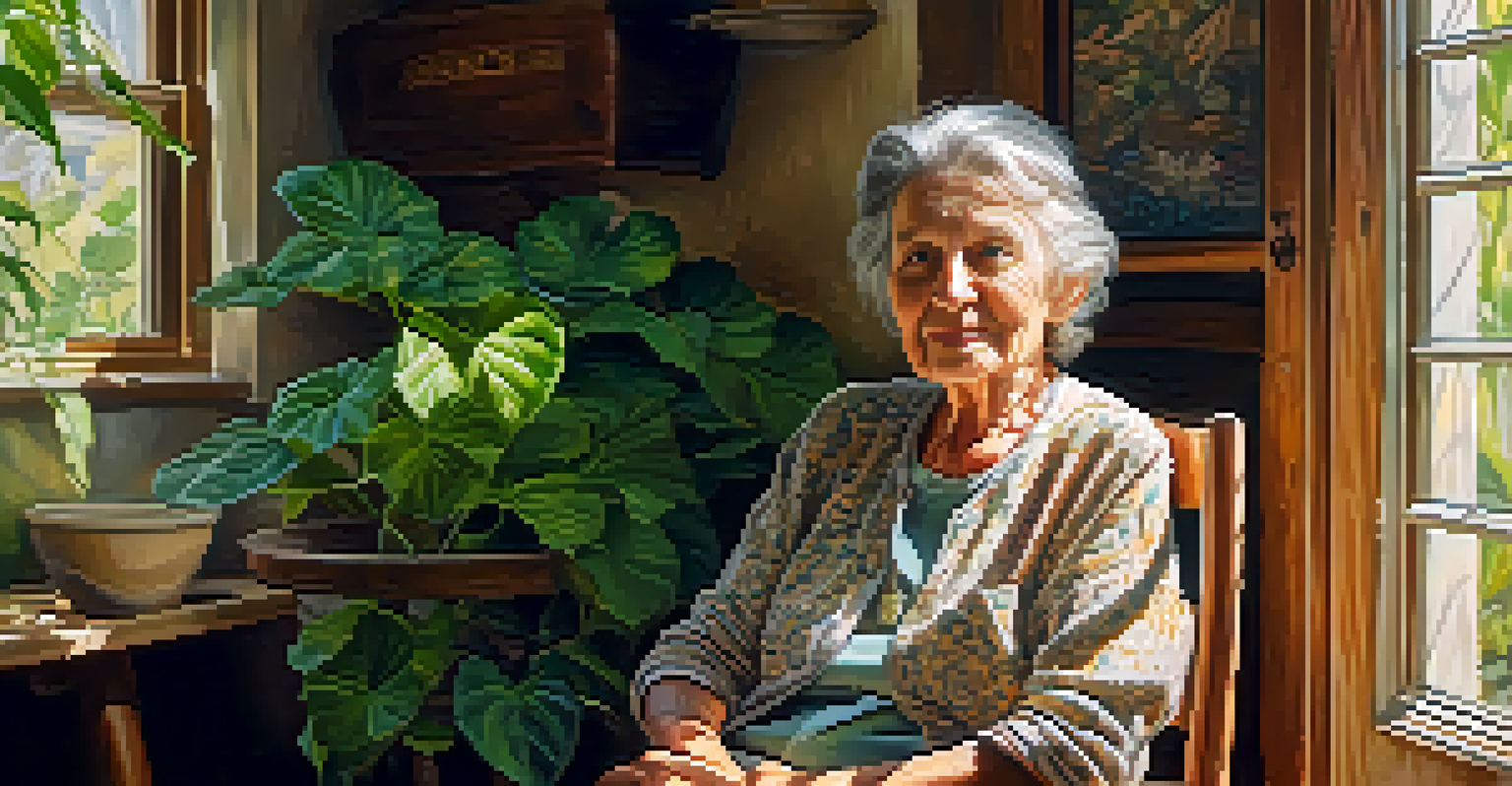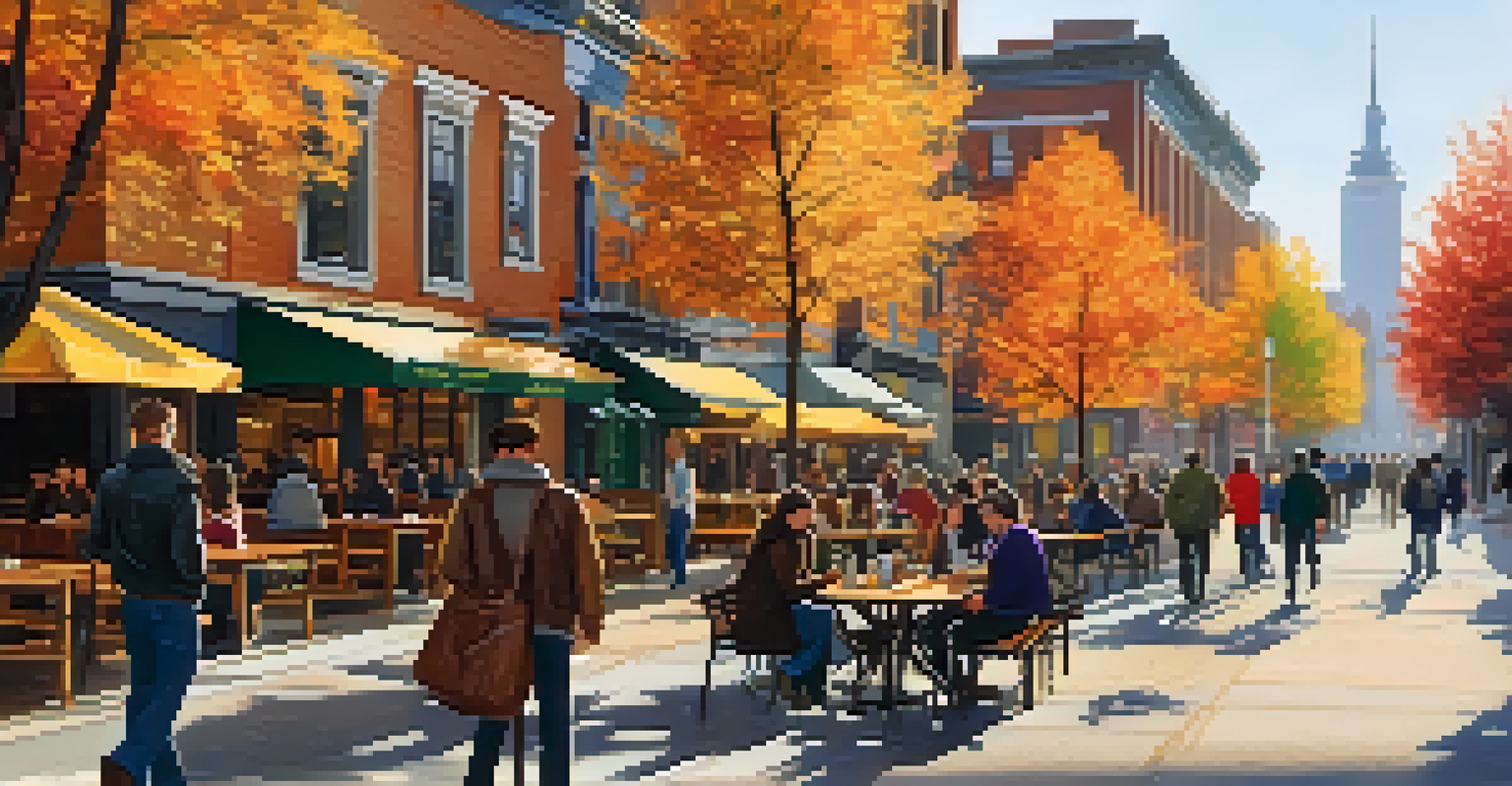The Impact of Historical Events on Painting Techniques Worldwide

The Renaissance: A Turning Point in Artistic Expression
The Renaissance, spanning the 14th to 17th centuries, marked a profound transformation in art, driven largely by renewed interest in classical antiquity. Artists like Leonardo da Vinci and Michelangelo embraced humanism, emphasizing the human form and emotion in their works. This period saw innovations in techniques such as linear perspective and chiaroscuro, which enhanced realism and depth in painting.
Art is the most beautiful of all lies.
As patrons, including the Medici family, commissioned art for churches and public spaces, painting became a medium for both personal expression and societal commentary. The competition among artists spurred advancements in oil painting, allowing for richer colors and more intricate details. The Renaissance set a high standard for artistic excellence that echoes in art education today.
Moreover, the influence of the Renaissance extended beyond Italy, impacting artists across Europe. Regions like Flanders and Spain adopted and adapted these techniques, leading to masterpieces that blended local styles with Renaissance principles. This cross-pollination of ideas laid the groundwork for future movements, showing how historical events can propel artistic evolution.
The Baroque Era: Emotion and Movement in Art
Emerging in the late 16th century, the Baroque era was characterized by dramatic expression and movement, often reflecting the tumultuous socio-political landscape of the time. The Catholic Church utilized art as a means of counter-reformation, commissioning grandiose works that aimed to evoke emotional responses from viewers. Artists like Caravaggio employed tenebrism, using stark contrasts of light and shadow to create theatrical effects.

Beyond religious themes, Baroque art captured the essence of everyday life, as seen in the works of Dutch masters like Rembrandt. His ability to convey human emotion through light and texture had a lasting impact on portrait and genre painting. This period also saw the rise of still-life painting, where artists explored composition and color in innovative ways.
Art Reflects Historical Events
Throughout history, various art movements have emerged as direct responses to significant historical events, showcasing how artists interpret their cultural context.
The Baroque style's influence extended into the 18th century, paving the way for Rococo's lighter, more playful aesthetic. The emphasis on emotion and drama in Baroque art continues to inspire contemporary artists, highlighting how historical events can shape artistic trends and techniques.
Impressionism: Capturing Fleeting Moments
The late 19th century brought about Impressionism, a movement that emerged in response to rapid industrialization and urbanization in France. Artists like Claude Monet sought to capture the essence of a moment, often painting en plein air to depict the effects of light and atmosphere on landscapes. This technique marked a departure from traditional methods, embracing spontaneity and brushwork.
Every artist dips his brush in his own soul, and paints his own nature into his pictures.
Impressionists faced criticism from the established art community for their unconventional styles, yet they paved the way for modern art movements. By prioritizing personal perception over realistic representation, they challenged traditional norms and inspired future artists to explore abstraction and expressionism. Their work reflects a broader societal shift towards valuing individual experience and interpretation.
Moreover, the Impressionist movement influenced artists worldwide, leading to unique interpretations in different cultures. In America, the movement gave rise to the Ashcan School, which focused on urban life and realism, showcasing how global events can inspire diverse artistic expressions. This interconnectedness illustrates the dynamic relationship between historical context and painting techniques.
The Impact of War on Art Movements
Throughout history, war has profoundly affected artistic expression, often leading to new styles and techniques. The devastation of World War I, for instance, catalyzed the emergence of Dadaism, a movement that rejected traditional aesthetics and embraced chaos and absurdity. Artists like Marcel Duchamp used unconventional materials and methods to challenge societal norms and provoke thought.
Similarly, the aftermath of World War II saw the rise of Abstract Expressionism in America, with artists like Jackson Pollock exploring spontaneity and emotion through innovative techniques like drip painting. This movement reflected the disillusionment of the time, as artists sought to convey the complexities of human experience in a chaotic world. The focus on individual expression became a hallmark of modern art.
Globalization Blends Artistic Styles
The interconnectedness of the modern world has led to a fusion of diverse artistic styles, enriching contemporary art through cultural collaboration.
Moreover, the impact of war extends beyond individual movements, shaping the cultural landscape of entire regions. In countries affected by conflict, artists often use their work to comment on social issues and human suffering, bridging the gap between historical events and contemporary artistic practices. This connection underscores the enduring influence of historical events on painting techniques worldwide.
Globalization: Blending Cultures in Art
As the world becomes more interconnected, globalization has sparked a fusion of artistic styles and techniques across cultures. Artists now draw inspiration from diverse traditions, creating works that reflect a blend of global influences. For instance, contemporary artists often incorporate elements of African, Asian, and Indigenous art into their practices, resulting in vibrant, multicultural expressions.
This blending of cultures is evident in movements like Street Art, where artists like Banksy utilize urban spaces to address social issues while incorporating diverse artistic influences. The accessibility of digital platforms allows artists to reach wider audiences, further promoting cultural exchange and collaboration. As a result, traditional techniques are reimagined in innovative ways, enriching the global art scene.
Moreover, art fairs and exhibitions showcase international artists, fostering dialogue and understanding among different cultures. This cultural melting pot not only enhances artistic techniques but also encourages artists to engage with global themes, making their work relevant in an increasingly interconnected world. The impact of globalization on painting techniques is a testament to the power of art as a universal language.
Technology's Role in Modern Painting Techniques
In the 21st century, technology has revolutionized painting techniques, offering artists new tools and mediums to explore. Digital art has gained popularity, allowing for limitless creativity and experimentation through software and digital canvases. Artists can manipulate images, create stunning visual effects, and even share their work instantly across the globe, changing how we perceive and engage with art.
Additionally, advancements in materials, such as acrylic paints and spray paints, have transformed traditional techniques. These innovations provide artists with greater flexibility and quicker drying times, enabling them to work more spontaneously and adapt their approach. For example, contemporary muralists often use spray paint for its efficiency and vibrant colors, creating large-scale works that capture public attention.
Technology Transforms Art Techniques
Advancements in technology have revolutionized painting techniques, providing artists with new tools and mediums that enhance creativity and expression.
Furthermore, technology fosters collaboration among artists, blurring the lines between different art forms. Projects that combine painting with animation or virtual reality challenge conventional boundaries, inviting viewers to experience art in immersive ways. This intersection of technology and painting techniques highlights how historical events, such as the digital revolution, continue to shape the artistic landscape.
Cultural Identity: Art as Reflection of Society
Art has always served as a mirror reflecting the cultural identity and societal values of its time. Historical events, such as colonization, migration, and social movements, have influenced artists' perceptions of their culture and identity. For instance, artists from post-colonial countries often explore themes of identity and heritage, using their work to reclaim narratives and challenge stereotypes.
In the United States, the Harlem Renaissance showcased the richness of African American culture through visual arts, music, and literature. Artists like Aaron Douglas used modernist techniques to celebrate Black identity and address social issues, highlighting how cultural movements can inspire artistic expression. This period emphasized the importance of art in shaping cultural identity and fostering community.

Moreover, contemporary artists continue to explore cultural identity through their work, often addressing issues of race, gender, and socio-economic status. By engaging with their histories and experiences, they create powerful narratives that resonate with diverse audiences. This ongoing dialogue between historical events and cultural identity underscores the vital role of painting techniques in expressing the complexities of society.
Conclusion: The Ongoing Evolution of Painting Techniques
Throughout history, painting techniques have continually evolved, shaped by a myriad of historical events and cultural influences. From the Renaissance to contemporary digital art, each movement reflects the unique context of its time, showcasing how artists respond to and interpret their world. This dynamic relationship between history and art serves as a testament to the resilience and adaptability of creative expression.
As we look to the future, it is clear that painting will continue to evolve alongside societal changes and technological advancements. Artists will undoubtedly find new ways to express their experiences and perspectives, pushing the boundaries of traditional techniques to explore innovative forms of expression. The rich tapestry of art history reminds us of the profound impact that historical events can have on painting techniques worldwide.
Ultimately, the influence of historical events on painting is an ongoing narrative, inviting us to explore the connections between art, culture, and society. As we engage with art, we not only appreciate its beauty but also gain insight into the human experience, fostering a deeper understanding of the world around us. This continuous dialogue between history and artistic expression enriches our lives and shapes the future of painting.